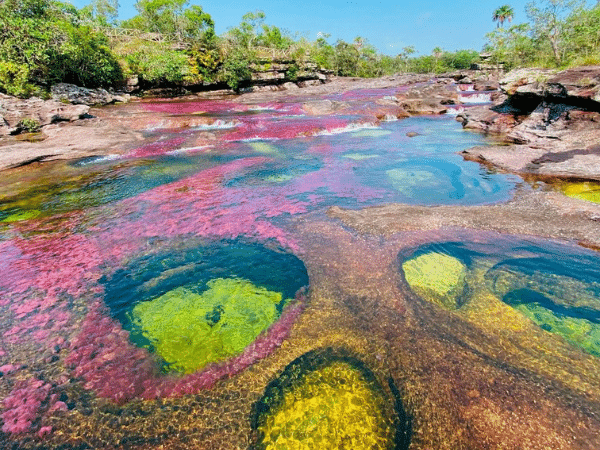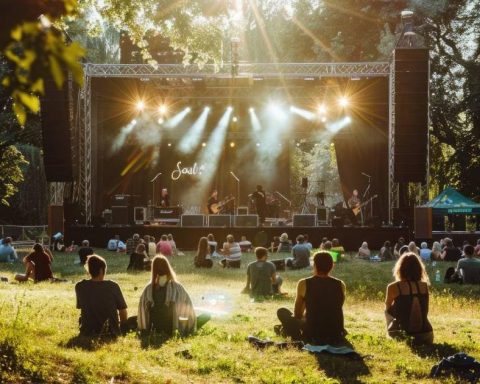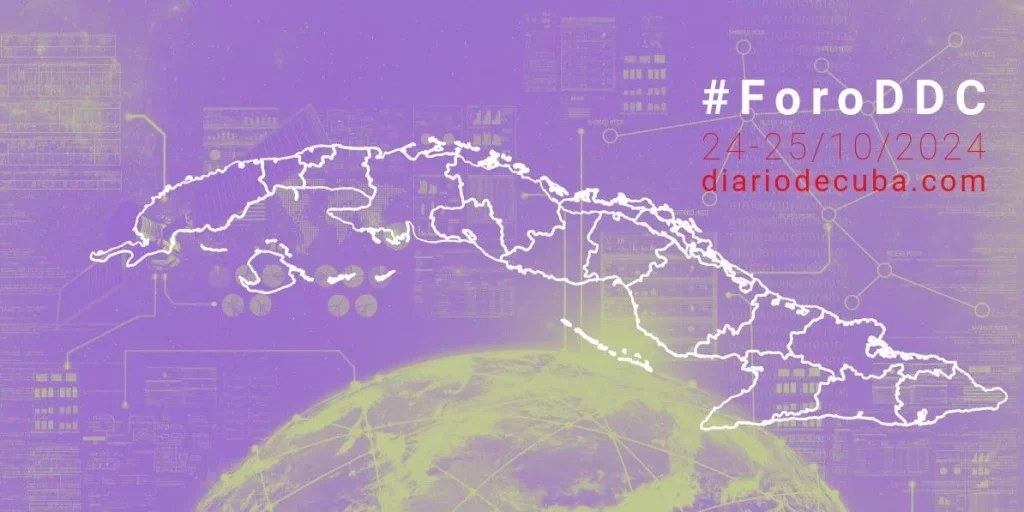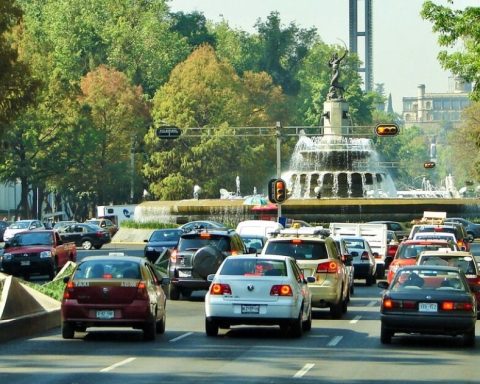Caño Cristales, located in the Sierra de la Macarena, Colombia, is known as the “river of five colors” due to the algae that transform its bed into a vibrant palette of red, yellow, green, blue and black between July and November. This natural phenomenon attracts tourists from all over the world, while protecting its ecosystem through access regulations and sustainable tourism practices.
News Colombia
Caño Cristales, located in the Sierra de la Macarena, has become an emblematic tourist destination in Colombia, known worldwide as the “river of five colors.” This natural phenomenon is the result of the presence of various algae that, during the months of July to November, transform the river bed into a vibrant palette of colors that includes shades of red, yellow, green, blue and black.
The color spectacle is mainly due to the Macarenia clavigera plant, which blooms during the rainy season, creating a stunning visual environment that attracts visitors from all over the world. This phenomenon not only stands out for its beauty, but also for its biodiversity; The region is home to numerous species of flora and fauna, many of them endemic.
Despite its growing popularity, access to Caño Cristales has been carefully regulated to preserve its ecosystem. Visitors should opt for guided tours that ensure minimal impact on the natural environment, and are encouraged to follow sustainable tourism practices.
How to get to the municipality of Macarena – Meta?
Airway
Its access is mainly by air for one hour (1) from the cities of Bogotá, Medellín, Cali or Villavicencio to the urban area of the municipality of La Macarena. Through the website of the authorized tourism operating agencies, you can find the possibility of traveling on direct flights to the municipality of La Macarena from some main cities.
Land route
The municipality of La Macarena is connected to the municipality of San Vicente del Caguán through a road (uncovered) with an average time between each municipality of five (5) hours. If you come from the interior of the country you must first arrive at Neiva (Huila), then Florencia (Caquetá) and, later, San Vicente del Caguán. The travel time from the city of Neiva to La Macarena is approximately twelve (12) hours in regular intermunicipal transportation to San Vicente del Caguán and, subsequently, in an equipped 4X4 vehicle, through a service provided by a service company. permanent, since the route between San Vicente del Caguán and La Macarena may be in irregular conditions.
How to get to Caño Cristales and Raudal Angosturas I, from the municipality of Macarena Raudal
Angosturas I
Once you reach the municipality of La Macarena, you must travel by river upstream of the Guayabero River to the disembarkation site in the Bajo Raudal village, located 21 kilometers from said municipality in a journey of approximately one hour by typical boat. Another possible option is to travel to the Bajo Raudal path along a 23-kilometer trail by bicycle, where you can enjoy the landscape and peasant life while reaching the ecotourism scene.
Caño Cristales Selva
Once you reach the municipality of La Macarena, you must travel by river downstream of the Guayabero River for 20 minutes until you reach the Cachivera school. While there, you can take the various trails designed with the community in order to enjoy different activities in the sector, such as sailing in the Silencio lagoon in Potrillo, bird watching and playing marimbas among the trees.
Colored Glass Spout
Once you reach the municipality of La Macarena, you must travel by river, upstream of the Guayabero River to the disembarkation port in the La Cachivera village for 20 minutes. There you must disembark and travel by land on a route of 8.4 kilometers that can be done on foot (1 hour and 45 min), by bicycle (45 min) or by vehicle (20 min) to the known sector.
like Caño Cajuche. At this site you must leave the vehicle used for transportation and walk 25 more minutes to the entrance of
the trails of Caño Cristales, located in the jurisdiction of CORMACARENA. From this point are the trails
duly signposted ecotourism sites indicating the entrance to the Sierra de La Macarena National Natural Park.
In addition to its natural beauty, Caño Cristales is a symbol of Colombian resilience and biodiversity, representing an effort to conserve and promote the country’s environmental wealth. Local communities also benefit from tourism, which helps foster economic development in the region.
With its unique mix of colors and rich biodiversity, Caño Cristales is not only a tourist destination; is a reminder of the importance of conservation and the natural beauty that Colombia has to offer. As more people discover this magical river, the hope is that it will encourage greater appreciation and care for this natural treasure.


















